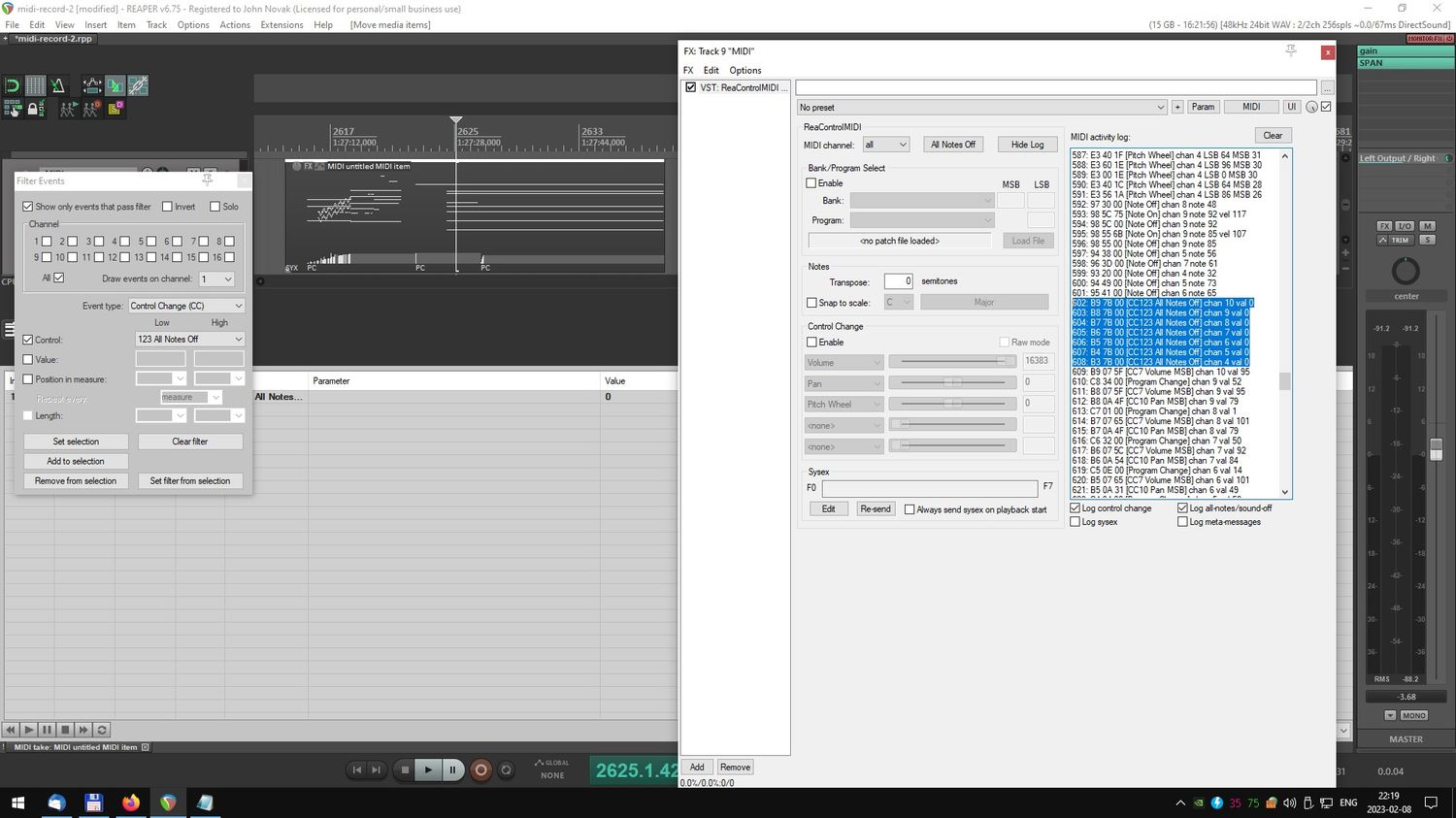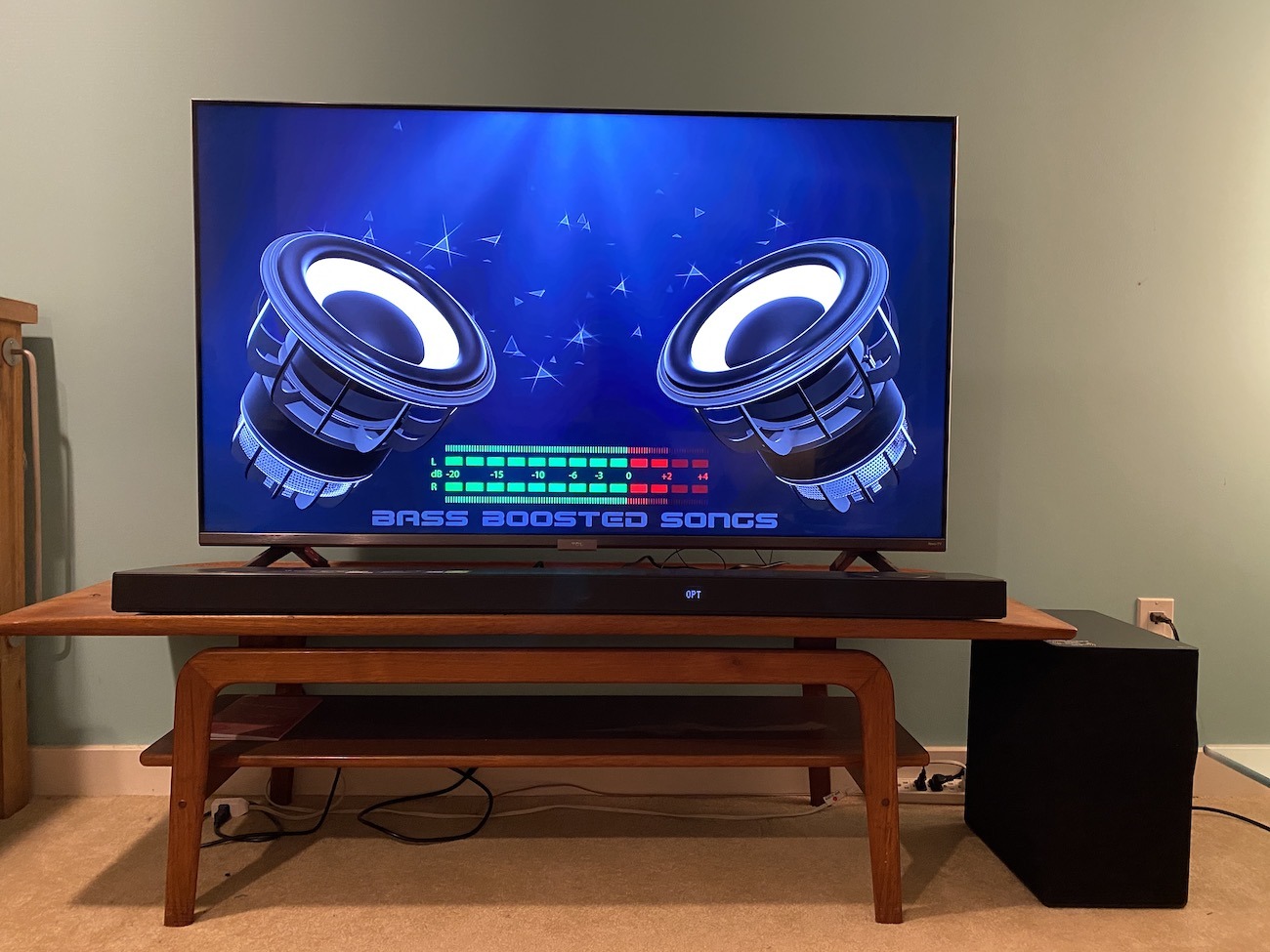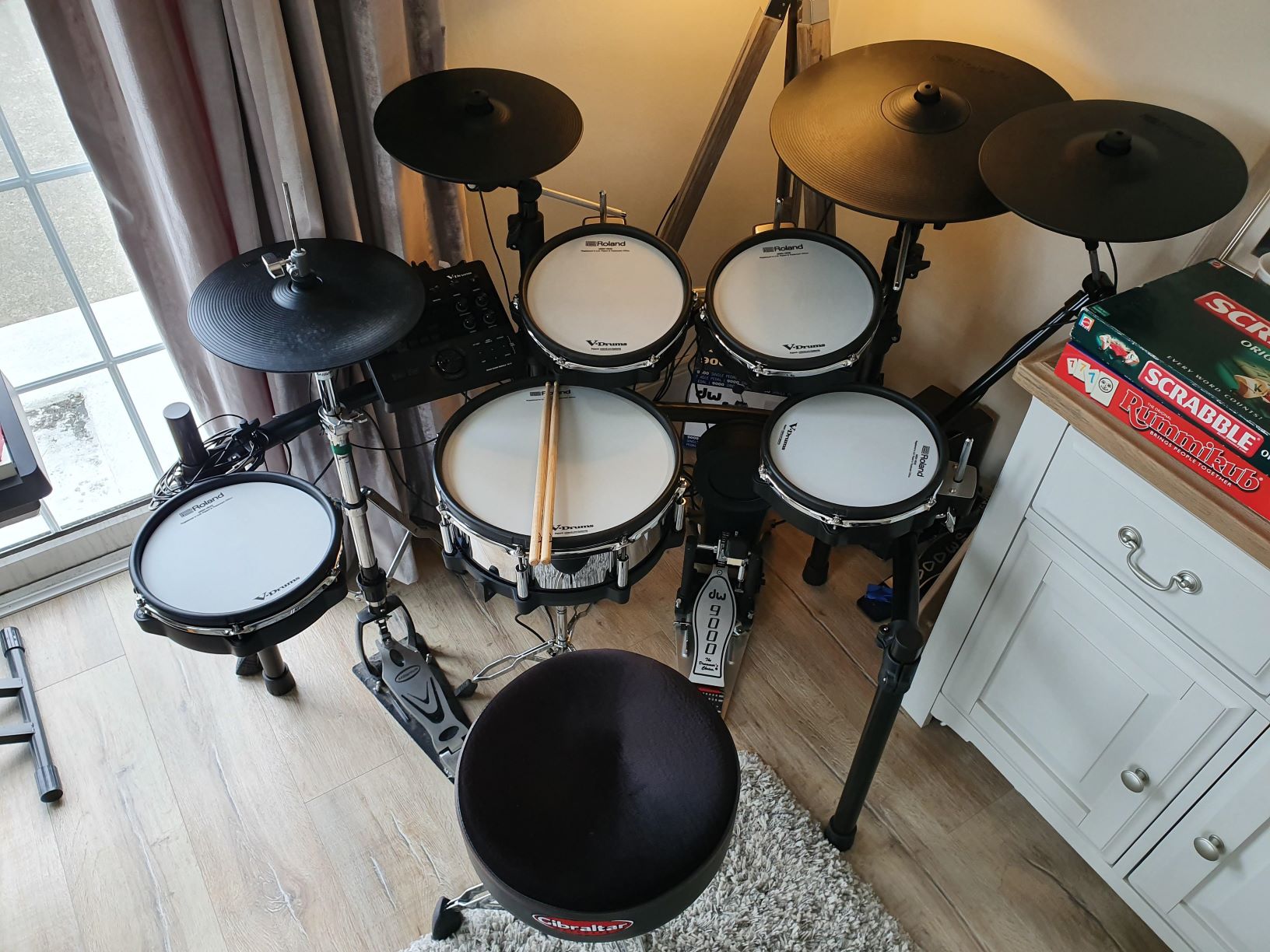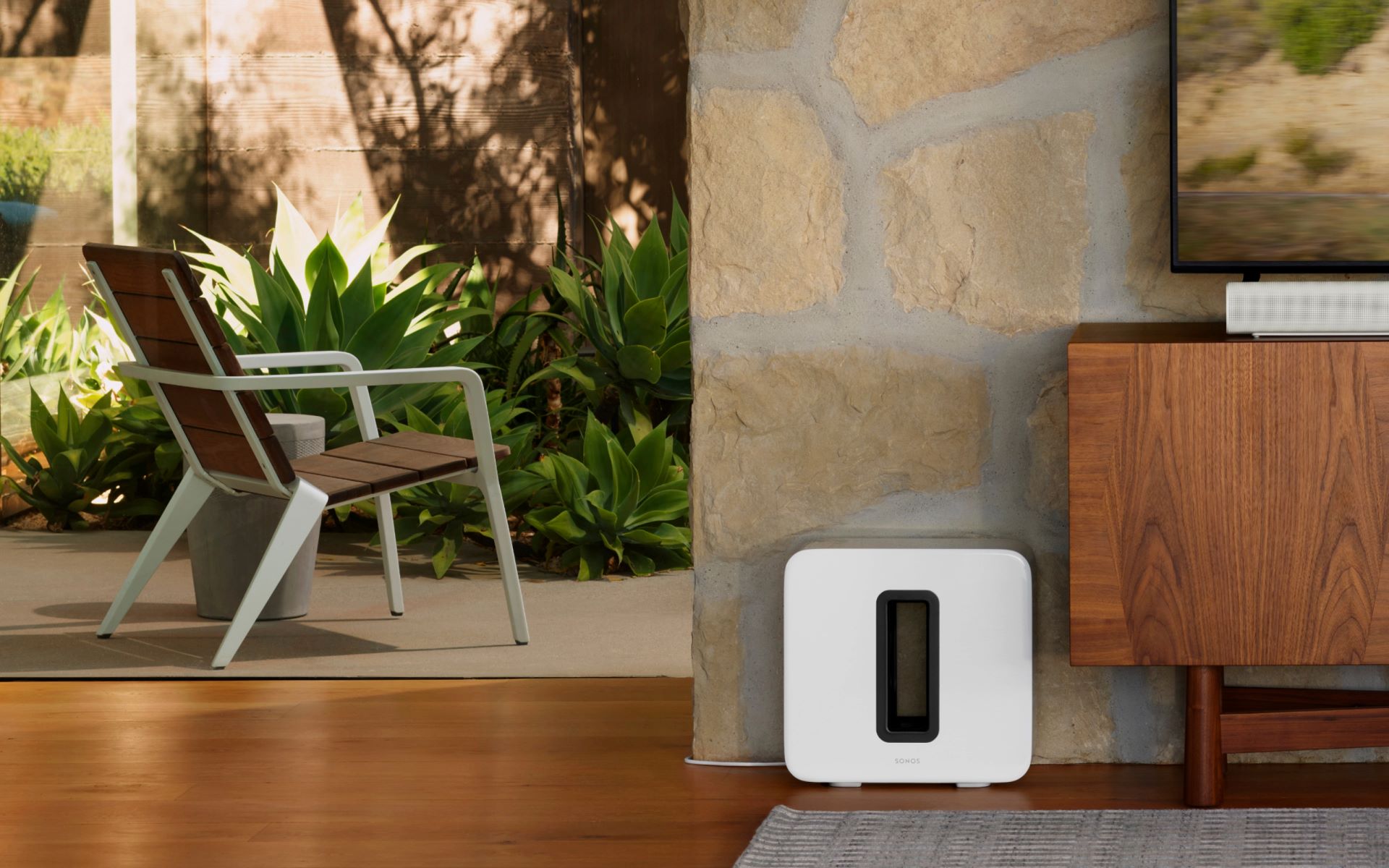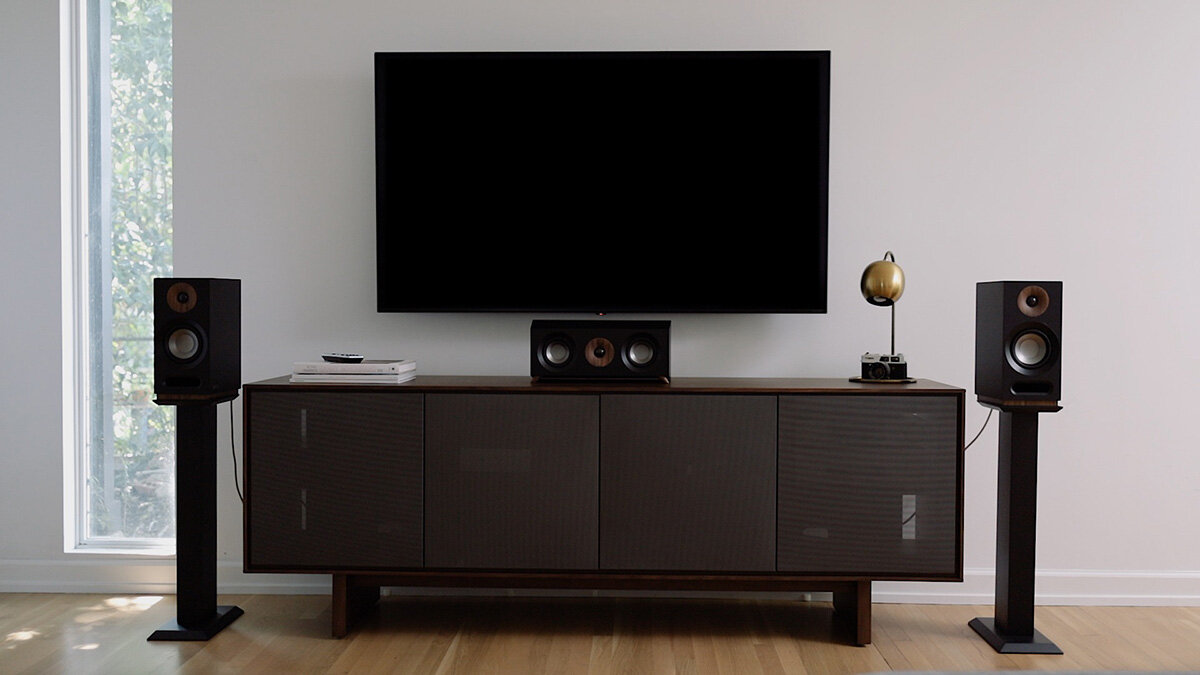Home>Instruments>Guitar>How To Set Up A Guitar


Guitar
How To Set Up A Guitar
Published: February 14, 2024
Learn how to set up your guitar for optimal playability and sound with our comprehensive guide. Discover essential tips and techniques for tuning, adjusting, and maintaining your instrument.
(Many of the links in this article redirect to a specific reviewed product. Your purchase of these products through affiliate links helps to generate commission for AudioLover.com, at no extra cost. Learn more)
Table of Contents
Introduction
So, you’ve got your hands on a new guitar, or perhaps you’ve dusted off an old one, and now you’re ready to make it sing. Setting up a guitar is an essential process that can significantly impact its playability and sound. Whether you’re a seasoned musician or just starting your musical journey, understanding how to set up a guitar is a valuable skill that can enhance your playing experience.
Setting up a guitar involves a series of adjustments to ensure that the instrument is comfortable to play and produces the best possible tone. This includes tweaking the neck for optimal straightness, setting the string action to your preference, adjusting the intonation for accurate pitch across the fretboard, and fine-tuning the pickups to capture your desired sound.
In this comprehensive guide, we’ll walk through the step-by-step process of setting up an electric or acoustic guitar. From choosing the right guitar for your needs to making precise adjustments using the appropriate tools, you’ll gain the knowledge and confidence to perform a professional setup at home. Whether you’re aiming for buttery-smooth bends, buzz-free fretting, or crystal-clear chords, a well-set-up guitar is the key to unlocking your full musical potential.
Let’s dive in and explore the art of guitar setup, empowering you to unleash the full sonic capabilities of your instrument. Whether you’re a blues aficionado, a rock virtuoso, or an acoustic troubadour, mastering the setup process will elevate your playing to new heights. So, grab your guitar and let’s embark on this transformative journey together.
Choosing the Right Guitar
Before delving into the intricacies of setting up a guitar, it’s crucial to ensure that you have the right instrument for your musical aspirations. Whether you’re eyeing an electric guitar for blistering solos or an acoustic guitar for soul-stirring ballads, selecting the perfect guitar sets the foundation for an exceptional playing experience.
When choosing a guitar, consider factors such as body style, tonewoods, and pickup configurations. Electric guitars come in various body shapes, from the iconic Stratocaster to the timeless Les Paul, each offering distinct tonal characteristics and playing comfort. Acoustic guitars, on the other hand, are available in dreadnought, concert, and parlor shapes, with tonewoods such as spruce, mahogany, and rosewood influencing their sonic profiles.
Furthermore, the choice between single-coil and humbucker pickups for electric guitars can shape your desired sound, ranging from bright and twangy to thick and powerful. For acoustic-electric guitars, selecting a reliable pickup system ensures that your acoustic tones translate faithfully in a live or studio setting.
Additionally, consider your playing style and musical genre when choosing a guitar. Are you drawn to the searing leads of rock and metal, the nuanced fingerpicking of folk and blues, or the rich chords of jazz and pop? Each genre may benefit from specific guitar features and tonal qualities, so aligning your instrument with your musical preferences is paramount.
Whether you’re browsing through the sleek offerings at a guitar shop or contemplating an online purchase, take the time to research and play different guitars to discern which one resonates with your musical vision. By selecting a guitar that speaks to your artistic sensibilities and ergonomic needs, you’ll set the stage for a fulfilling and inspiring musical journey.
Guitar Setup Tools and Materials
Equipping yourself with the right tools and materials is crucial for executing a successful guitar setup. Whether you’re fine-tuning the neck, adjusting the action, or intonating the instrument, having the appropriate tools at your disposal ensures precision and efficiency throughout the setup process.
Here are the essential tools and materials you’ll need for setting up your guitar:
- Truss Rod Wrench: This specialized wrench allows you to adjust the truss rod, which controls the neck’s relief or curvature. Proper truss rod adjustments are vital for maintaining optimal playability and preventing fret buzz.
- Capo: A capo is useful for fretting the strings at specific positions, facilitating adjustments to the nut and saddle without holding down the strings manually.
- Feeler Gauges: These precision measurement tools help you set the string action and check the neck relief with accuracy, ensuring consistent and comfortable playability.
- Screwdrivers: Phillips and flathead screwdrivers are essential for adjusting the bridge, pickups, and other hardware components on electric and acoustic guitars.
- String Action Gauge: This tool enables you to measure the string height at the nut and saddle, allowing you to set the action to your desired playing style and comfort level.
- Electronic Tuner: An accurate tuner is indispensable for intonating the guitar and ensuring precise pitch across the fretboard.
- String Winder and Cutter: These tools simplify the process of changing strings and trimming excess string length, streamlining maintenance and setup tasks.
- Microfiber Cloth: Keeping a soft cloth on hand allows you to clean and polish the guitar, preserving its aesthetic appeal and longevity.
Additionally, having a comfortable workspace with good lighting and a stable surface to support the guitar is essential for performing setup tasks with ease and accuracy. With these tools and materials at your disposal, you’ll be well-equipped to embark on the guitar setup journey, fine-tuning your instrument to meet your specific playing preferences and sonic aspirations.
Adjusting the Guitar Neck
The neck of a guitar plays a pivotal role in determining its playability and overall feel. Proper neck adjustment, specifically the relief or curvature of the neck, is essential for achieving comfortable action and preventing fret buzz. Here’s a step-by-step guide to adjusting the neck of your guitar:
- Assess the Neck Relief: To begin, tune the guitar to pitch and hold it in playing position. Using a capo on the first fret, fret the low E string at the fret where the neck meets the body (usually the 17th fret on electric guitars and the 14th fret on acoustic guitars).
- Measure the Relief: With the low E string still fretted, use a feeler gauge to measure the gap between the bottom of the string and the top of the 7th or 8th fret. The ideal relief typically ranges from 0.008 to 0.012 inches, providing a balance between comfortable playability and minimal fret buzz.
- Adjust the Truss Rod: If the neck relief needs modification, use a truss rod wrench to make subtle adjustments. Turning the truss rod clockwise (righty-tighty) typically straightens the neck and reduces relief, while turning it counterclockwise (lefty-loosey) adds relief by allowing the neck to curve slightly.
- Monitor the Progress: After each truss rod adjustment, retune the guitar and recheck the neck relief to gauge the impact of your adjustments. Avoid making drastic changes, as gradual tweaks allow for better control and minimize the risk of overcorrection.
- Repeat as Needed: It’s common for neck relief adjustments to require multiple iterations, especially when transitioning to a different string gauge or encountering environmental changes. Exercise patience and attentiveness throughout the process to achieve the optimal neck curvature for your playing style and preferences.
By mastering the art of neck adjustment, you can tailor the playability of your guitar to suit your unique touch and musical expression. Whether you prefer low, lightning-fast action for shredding solos or a slightly higher action for robust acoustic strumming, a well-adjusted neck sets the stage for effortless and enjoyable playing experiences.
Setting the Action
The action of a guitar, referring to the height of the strings above the fretboard, significantly influences playability, tone, and comfort. Adjusting the action allows you to customize the feel of the instrument to align with your playing style and preferences. Here’s a detailed guide to setting the action of your guitar:
- Assess the Current Action: Before making any adjustments, evaluate the existing string height at the 12th fret using a string action gauge. This initial assessment provides a baseline for determining the desired action and identifying any discrepancies between the strings.
- Adjust the Bridge or Saddle: Electric guitars typically feature adjustable bridges, allowing you to raise or lower the saddle for individual string height adjustments. Acoustic guitars may have a compensated saddle that can be carefully sanded to alter the action. Use a screwdriver or specialized tools to make precise adjustments, ensuring uniform string height across the fretboard.
- Consider Playing Style: Tailor the action to complement your playing technique and musical preferences. Lower action facilitates swift fretting and bending, ideal for lead guitarists, while slightly higher action provides enhanced resonance and sustain, favored by many acoustic players.
- Test and Refine: After adjusting the action, play the guitar to gauge the comfort and playability of the new setup. Listen for any fret buzz or excessive string resistance, and make further adjustments as needed to achieve a balanced action that facilitates smooth fretting and clear articulation.
- Monitor String Height: Regularly measure the string height at various fret positions to ensure consistency and identify potential high or low spots along the fretboard. This iterative process allows you to fine-tune the action for optimal comfort and playability across all strings and frets.
By mastering the art of action adjustment, you can transform the feel and responsiveness of your guitar, tailoring it to suit your playing nuances and musical expression. Whether you seek effortless string bends, lightning-fast fretting, or resonant chord voicings, a well-set action is the gateway to unlocking your instrument’s full potential.
Intonating the Guitar
Intonation is a critical aspect of a guitar’s setup, ensuring that each note rings true and in tune across the entire fretboard. Proper intonation is essential for achieving accurate pitch and harmonious chords, especially when playing in different positions and keys. Here’s a comprehensive guide to intonating your guitar:
- Assess the Initial Intonation: Begin by tuning the guitar to pitch using an electronic tuner. Play the open string and then fret the same string at the 12th fret, noting any discrepancies in pitch between the two positions. If the fretted note sounds sharp or flat compared to the open string, intonation adjustments are necessary.
- Adjust the Saddle Position: Electric guitars feature adjustable saddles that can be repositioned to fine-tune the string length, while acoustic guitars may require a skilled luthier to make precise adjustments to the saddle. Use a screwdriver to move the saddle forward or backward, aligning the 12th fret harmonic and fretted note to produce identical pitches.
- Test Across the Fretboard: After making initial adjustments, play each string at various fret positions to verify consistent intonation. Pay close attention to the 12th, 7th, and 5th frets, as these areas often reveal intonation irregularities that require further refinement.
- Revisit and Fine-Tune: Intonation adjustments may necessitate iterative refinements to achieve optimal pitch accuracy. Retune the guitar after each adjustment and recheck the intonation to ensure that the fretted notes align harmoniously with their respective open strings.
- Consider String Gauges: Changing string gauges or tunings can impact the guitar’s intonation, requiring readjustments to maintain accurate pitch. Be mindful of intonation when transitioning to different string sets or exploring alternate tunings to uphold consistent tonal integrity.
By meticulously intonating your guitar, you ensure that every note resonates with clarity and precision, empowering you to explore the instrument’s sonic landscape with confidence and musicality. Whether you’re crafting intricate melodies, strumming vibrant chords, or unleashing searing leads, impeccable intonation is the cornerstone of a harmonically rich and expressive playing experience.
Adjusting the Pickups
The pickups of a guitar play a pivotal role in capturing its tonal character and sonic nuances. Proper pickup adjustment allows you to sculpt the instrument’s sound, balance tonal output across the strings, and optimize the response to your playing dynamics. Here’s a detailed guide to adjusting the pickups of your guitar:
- Assess Pickup Height: Begin by evaluating the current pickup height, ensuring that the distance between the pickups and the strings is uniform and balanced across all strings. Use a ruler or specialized pickup height gauge to measure the distance, typically ranging from 1/16 to 1/8 inch for electric guitars and 3/16 to 1/4 inch for acoustic guitars.
- Balance String Output: Play each string individually and assess the tonal balance and volume output of the pickups. Adjust the pickup height as needed to achieve consistent string-to-string response, minimizing tonal discrepancies and ensuring a well-balanced sonic profile.
- Experiment with Pickup Position: Fine-tune the pickup height to explore different tonal characteristics and dynamic responses. Lowering the pickups can yield a warmer and more resonant tone, while raising them enhances clarity and articulation, allowing you to tailor the instrument’s sound to your sonic preferences.
- Consider Playing Dynamics: Adjust the pickups to accommodate your playing style and dynamics. If you favor aggressive picking and powerful strumming, slightly lower the pickups to mitigate potential overloading and maintain tonal clarity. Conversely, if you employ subtle fingerpicking or nuanced lead playing, raising the pickups can heighten responsiveness and articulation.
- Listen and Refine: Play the guitar across various musical passages and styles, listening attentively to the tonal nuances and dynamic responsiveness. Make incremental adjustments to the pickup height to achieve a balanced and responsive tonal palette that complements your musical expression.
By mastering the art of pickup adjustment, you can unlock the full sonic potential of your guitar, tailoring its tonal characteristics to resonate with your musical vision and playing style. Whether you seek searing lead tones, lush chord voicings, or crystalline clean sounds, precise pickup adjustment empowers you to sculpt a personalized sonic signature that resonates with clarity and expressiveness.
Conclusion
Congratulations! By delving into the art of guitar setup, you’ve embarked on a transformative journey that empowers you to unlock the full potential of your instrument. Whether you’re a seasoned guitarist or a budding musician, the process of setting up a guitar is a gateway to achieving unparalleled playability, tonal richness, and personalized sonic expression.
From choosing the right guitar that resonates with your musical aspirations to fine-tuning its components with precision and care, the setup process is a testament to your dedication to the craft. Each adjustment, whether it’s refining the neck relief, setting the action, intonating the instrument, or adjusting the pickups, plays a crucial role in shaping the instrument to align with your playing style and sonic preferences.
As you navigate the intricacies of guitar setup, remember that patience, attentiveness, and a discerning ear are your greatest allies. Embrace the iterative nature of the setup process, allowing yourself to make gradual refinements as you listen, play, and adjust to achieve the perfect balance of comfort, playability, and tonal excellence.
Ultimately, the art of guitar setup is a harmonious fusion of technical precision and artistic sensibility. It’s a testament to your commitment to crafting a personalized playing experience that resonates with clarity, expressiveness, and musicality. Whether you’re crafting vibrant chord progressions, unleashing searing leads, or weaving intricate melodies, a well-set-up guitar becomes an extension of your musical voice, amplifying your creativity and inspiring your sonic explorations.
So, pick up your guitar, embrace the setup process with enthusiasm and curiosity, and revel in the transformative power of tailoring an instrument that speaks to your musical soul. As you embark on this journey, may your guitar become a trusted companion, a vessel for your artistic expression, and a source of boundless inspiration as you bring your musical visions to life.

